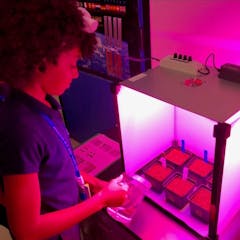
Articles on Artemis program
Displaying 1 - 20 of 46 articles

Space exploration is not a waste of resources, but a source of technological and medical advances, a tool for climate monitoring and a source of educational inspiration for youth.

The next generation of spacesuit needs to do more than simply protect an astronaut from the vacuum of space.

A private company has successfully delivered cargo to the Moon’s surface for the first time. Here’s what that means for future space exploration.

Can astronauts spend prolonged time in close quarters millions of miles from Earth without killing each other?

Projects under NASA’s CLPS program – including the Odysseus lander that made it to the lunar surface – will probe unexplored questions about the universe’s formation.

In sci-fi depictions, extraterrestrial habitats have evolved tandem with scientific understanding of conditions on planets

NASA announced that the next two Artemis missions — Artemis II and III — will be delayed for safety reasons. However, Artemis IV remains on schedule.

The Peregrine and Nova-C landers are due to carry out valuable science at two diverse lunar locations.

Expect lots of space missions to launch this coming year, with exciting new science to follow.

Chandrayaan-3’s successful landing on the Moon made 2023 a big year for lunar exploration, and future years will come with even more discoveries.

Astronauts living and working on the Moon will need something to eat. The Growing Beyond Earth program supports international space crop research.

Space can damage everything from your cardiovascular and nervous systems to your mental health – long voyages can feel isolating for many.

India became the first country to land near the south pole of the Moon, a notoriously difficult achievement that also marks them as the fourth country to land on the Moon.

The launch of a new rocket is always an exciting event. SpaceX’s ‘go fast and fail’ approach means that even though the test ended with engineers blowing up the rocket, it was a valuable first flight.

As signatories, Nigeria and Rwanda are demonstrating their commitment to safe, sustainable use of outer space. This should have multiple benefits.

The current race to the Moon is opening up opportunities for lunar astronomy.

China has invested massively in its space capabilities in recent years and is now a major competitor with the US. But according to a space policy expert, the US still dominates space by most measures.

The crew of Artemis II will face new and old challenges when they return to the Moon.

The Artemis II mission is scheduled for launch in late 2024 and is a critical step towards NASA’s goals of establishing a permanent human presence on and near the Moon.

With more than 100 lunar missions planned in coming years, space junk near the Moon could become an issue for humanity. No agency tracks lunar space junk, so two astronomers decided to do it themselves.
